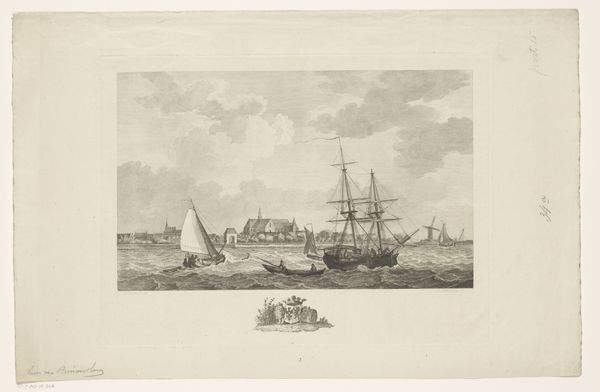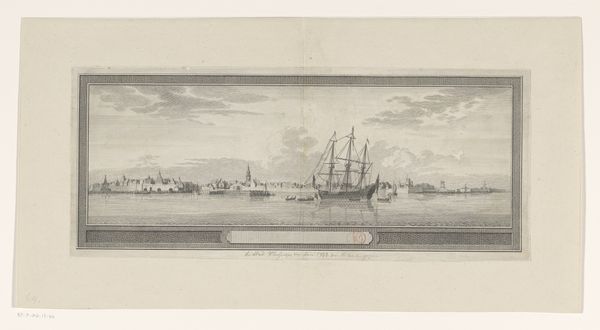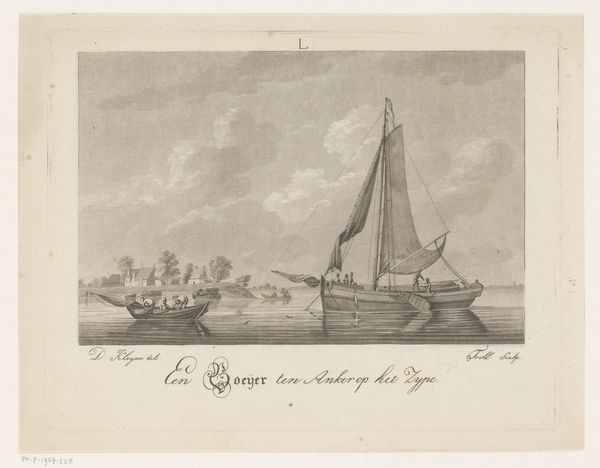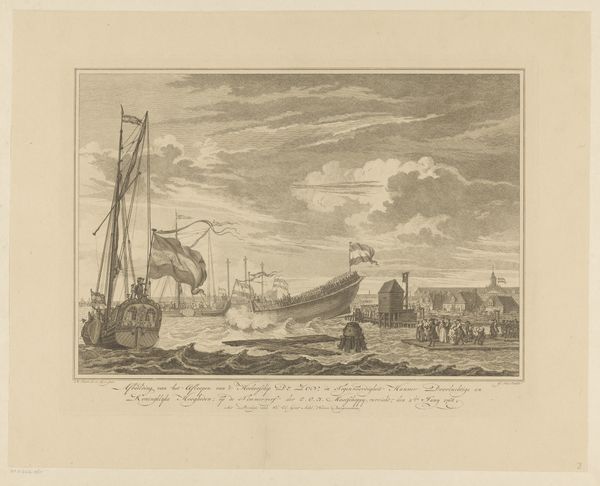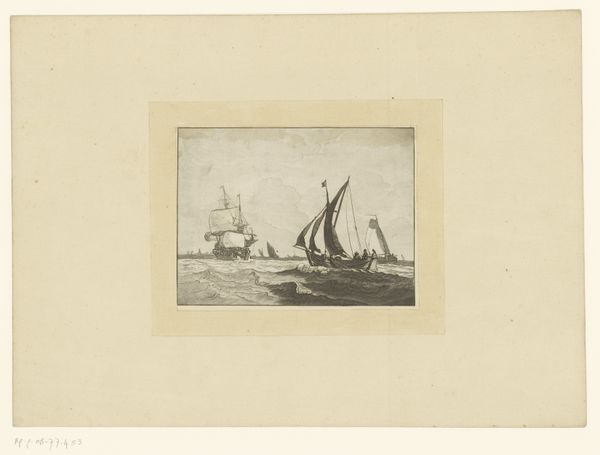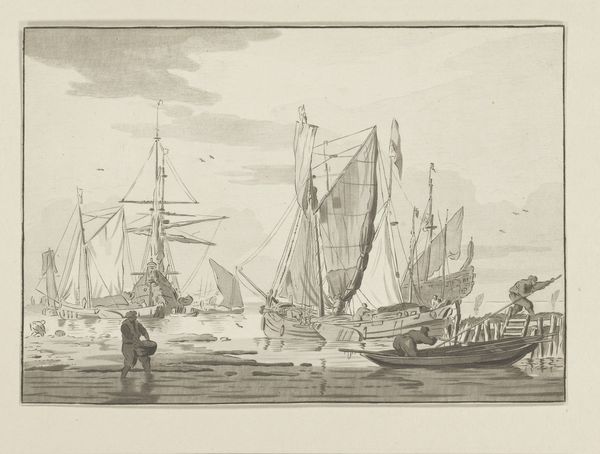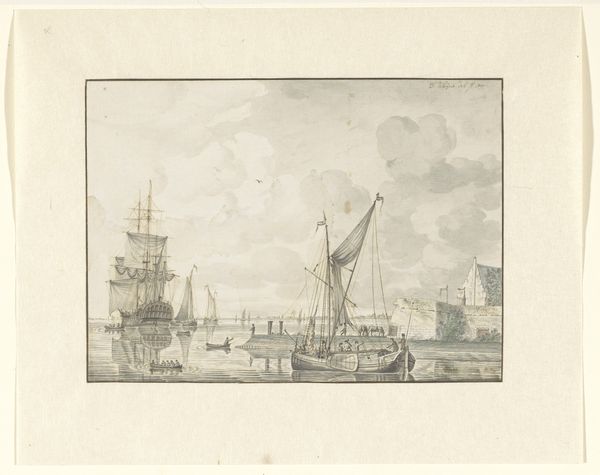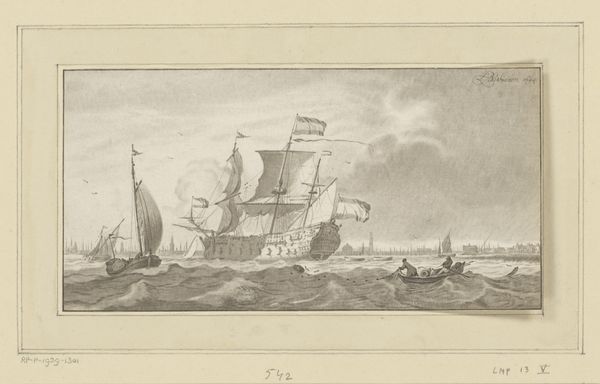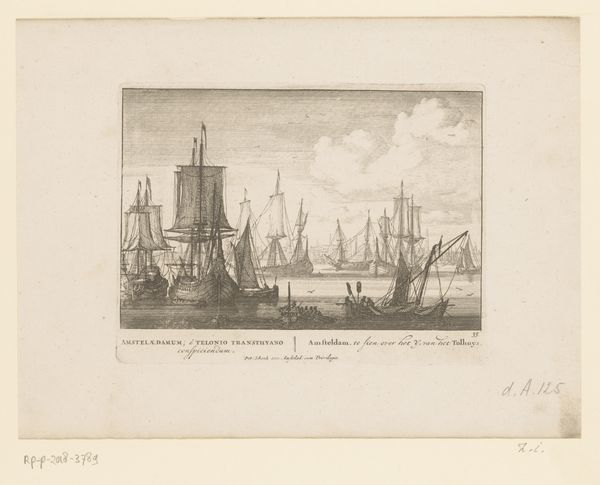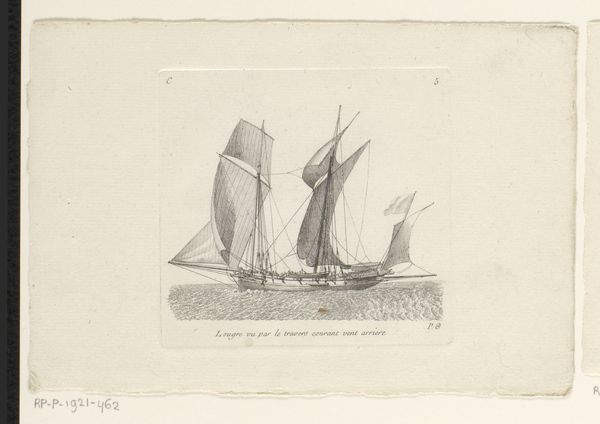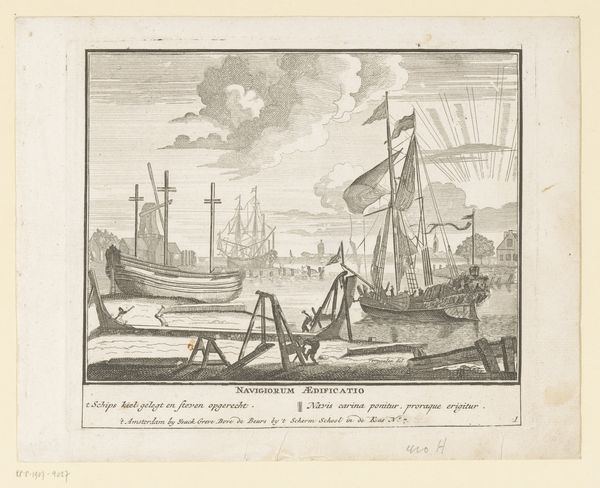
Dimensions: height 85 mm, width 158 mm
Copyright: Rijks Museum: Open Domain
Jeanne Françoise Ozanne made this print, "Bugalet vaart langs de kust bij Brest," using etching, a printmaking technique that relies on the corrosive power of acid. The artist would have coated a metal plate with a waxy, protective layer, then scratched an image into that surface, exposing the metal underneath. When immersed in acid, the exposed lines are bitten away, creating grooves that hold ink. The final print gives us fine lines and subtle shading, reflecting the precise handwork involved. Printmaking was a critical means of circulating information in the 18th century, particularly of technical and scientific subjects. Ozanne came from a family of marine engineers and her prints documented naval activity in France. While seemingly simple, the print is a testament to a complex interplay of technical skill and social context. Printmaking democratized art, making it accessible to a wider audience, and also served the needs of industry and governance. In this way, it challenges our definitions of what counts as art and whose work is valued.
Comments
No comments
Be the first to comment and join the conversation on the ultimate creative platform.
